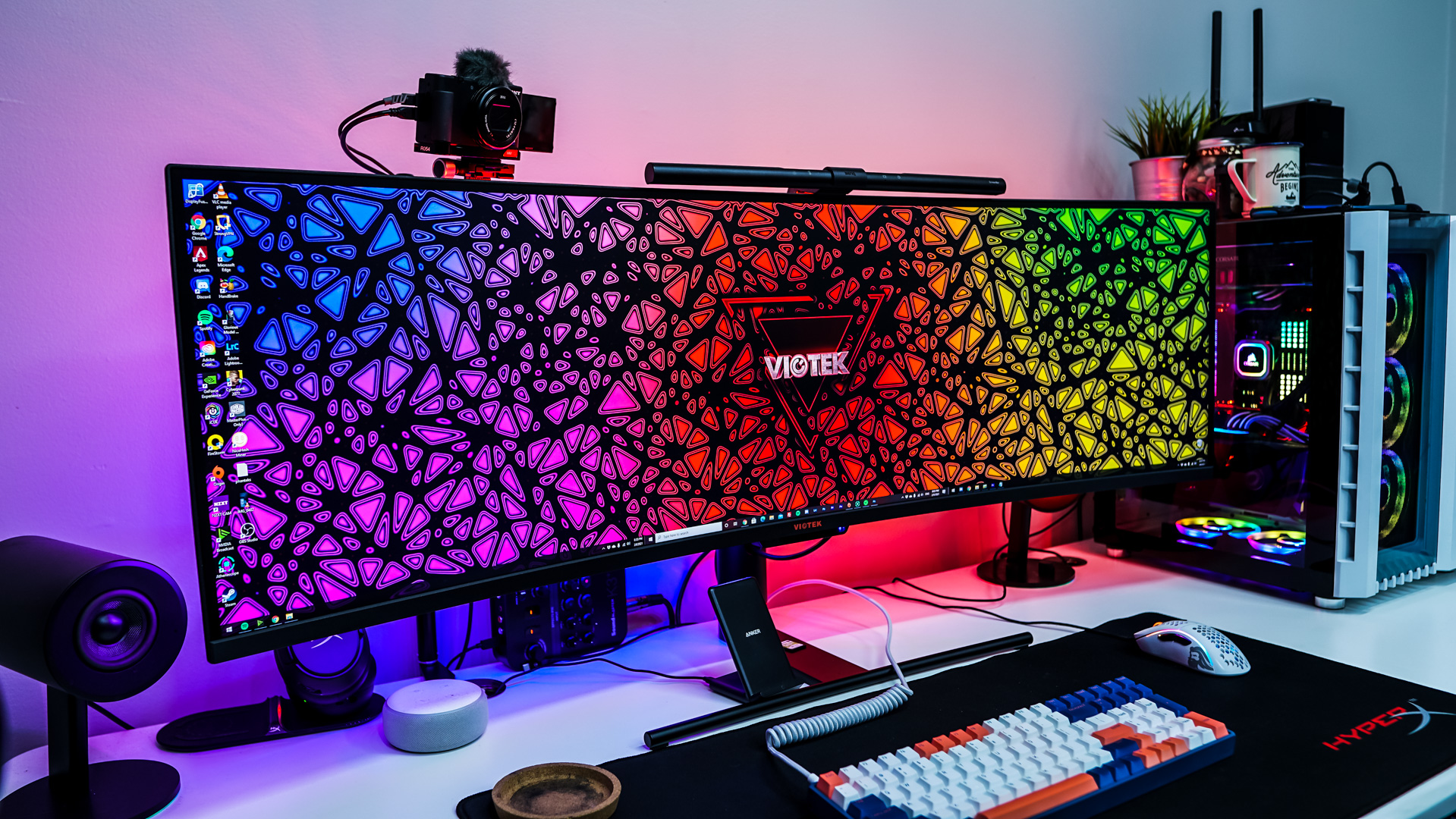The times of 24-inch monitors are long gone, but even one single 27-inch monitor does not feel right these days. Maximizing desktop real estate can boost work efficiency and make gaming a whole new experience.
Expanding desktop real estate comes with two frequently used options: The dual-monitor setup and the ultrawide monitor.
This article explains the main benefits of both setups and reveals the disadvantages.
Monitors for Business Use
Monitors for business use are typically dual-monitor setups that allow multi-tasking. Windows allows to arrange various monitors flexibly, and the user can arrange applications to each monitor in the way he wants. The classic 16:9 ratio works best for Microsoft Windows operating systems and most tools. One of both monitors is then often used for emails, and the other one to work with specific apps.
But, sometimes, even a dual-monitor setup is not enough in business use. A day trading computer setup, for example, typically requires a minimum of three monitors. However, you’ll often see that investors simultaneously use four or even six monitors. The need comes from various trading tools and software solutions that require high resolution and full-screen. It is helpful to have a separate display for each program since it makes the trading activity more flexible and efficiently supports arranging various tools.
Monitors for Gaming
Ultrawide monitors are often the preferred choice for PC gaming. That’s primarily due to the bezel running down in the middle of both displays if using a dual-monitor setup. There is simply no benefit of having no visible pixels right in the middle of the action. Sure, it can be cool to play a game on one monitor while keeping an eye on other things in parallel on the other one. But the fun in gaming comes from the deepened feeling with surrounding monitors.
Speaking about console gaming – doing it on a TV screen is the only reasonable option. Of course, a widescreen might be okay, and maybe your console can even handle typical widescreen solutions (which is not necessarily the case), but who would really enjoy playing console games on a widescreen monitor? Exactly, that’s why console gaming needs a 55-inch TV minimum for a great experience.
Advantages of Dual Monitors
The key benefit of dual monitors is the clean working space for multi-tasking-related work. Each screen can have its application monitored. Every app can be opened full screen within one monitor, and there is no need to adjust the sizing or arrange various apps freely in one monitor. Also, dual monitors allow for multiple high-resolutions in parallel. Did you ever try 4K resolution on a 27-inch monitor using standard Windows fonts? The fonts are so small that you will have trouble reading the text correctly. That’s why most dual monitor setups have full HD only. They are cheap, and users can see everything in a proper size.
Disadvantages of Dual Monitors
Multiple monitors are great as long as separate tools and apps are used on one monitor. But combining both for one app does not make any sense since between the monitors is just one thing visible – plastic – the frame of one side of monitor one and the frame of the other side of monitor two. Also, multiple monitors require multiple graphic card ports. So if you buy a computer with an onboard graphic card, then dual monitoring is not possible. Instead, it needs a graphic card with, for example, two HDMI ports.
Advantages of Ultrawide Monitors
Ultrawide monitors allow gamers to have a fantastic gaming experience if the game actively supports the 21:9 aspect ratio of an ultrawide monitor. Some people even enjoy using 49-inch ultrawide monitors a lot, for example, if they use tools like Microsoft Excel. Instead of seeing just columns A to O with a full-HD resolution, they see columns A to AU using 4K with a 21:9 aspect ratio.
Disadvantages of Ultrawide Monitors
Ultrawide monitors require a powerful graphic card if 4K resolution is used. Also, the power of the personal computer should fit the requirements to serve the 4K resolution. Otherwise, it will be an unsatisfying experience, at least if gaming is the primary objective.
Also, not every game supports the 21:9 aspect ratio of an ultrawide monitor natively. Instead, many games just zoom in or simply provide a 16:9 aspect ratio, which leaves extensive black areas on the left or right of the game in the center.
Conclusion
The battle of ultrawide vs. dual monitors has no clear winner. There are multiple benefits but also disadvantages for both. It mainly depends on the specific use and budget.
The ultrawide monitor is great for users looking for a big display without annoying plastic in the middle of a dual-monitor setup. In addition, it is an excellent experience for users who do a lot of analysis and play games that support the aspect ratio of the widescreen.
The classic dual monitor setup is primarily for office use, handling multiple applications on separate monitors.
However, there is also another fantastic combination we haven’t talked about yet. Dual-monitoring does not necessarily mean that two similar monitors are needed. For example, nothing speaks against combining an ultrawide 49-inch monitor with a 34-inch 4k gaming monitor. The setup might not look that homogeneous, but it is a powerful combination serving the users with the best of both worlds if the budget allows it.


